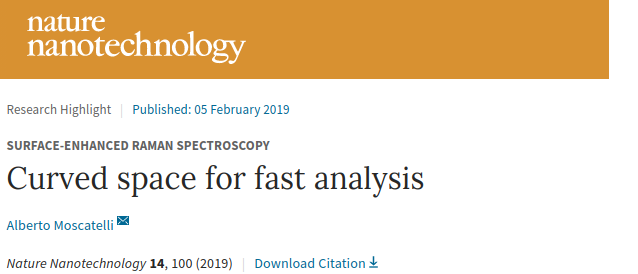The electric field intensity near a silver nanoparticle is enhanced by virtue of surface plasmons. When a molecule experiences such a high electric field, it gives out an intense Raman spectrum, and this effect has been used for spectroscopic and analytical purposes. So effective is this surface-enhanced Raman spectroscopy (SERS) effect that detection limits up to the single-molecule level have been demonstrated. A common drawback, however, is the fact that the analyte must be very close to the silver nanoparticle; and it may take hours for molecules to diffuse from bulk solution. Now Mao et al. have demonstrated a strategy to reduce the preparation time for a SERS analysis to 60 seconds while maintaining a single-molecule detection limit.
The researchers start with the consideration that the electric field enhancement is due to a spatial variation of the refractive index of the medium. On a flat substrate, the refractive index can only vary in the proximity of the nanoparticle. Instead, Mao et al. design a curved substrate composed of silver nanoparticles inside tiny gold bowls. The curved substrate induces the electric field intensity to be confined within the space of the bowl and towards the bulk solution. As a result, a relatively constant enhancement is induced near the surface, with the outcome that it takes only 60 seconds of soaking time to achieve the single-molecule detection limit for a rhodamine 6G molecule.


Recent Comments